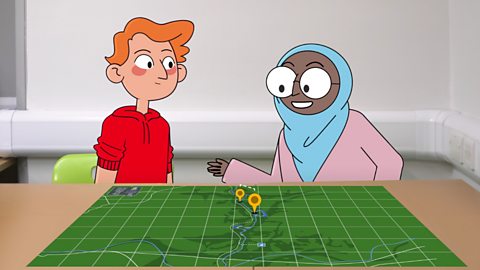What do you need to think about?

Fieldwork is when you go outside the classroom and find things out for yourself.
When carrying out fieldwork, you will need to think like a geographer. What is the fieldwork? Where and how will you carry it out? And why will you be doing it?
What?
- observe
- plan
- question
- research
Where?
- use maps and plans to explain where places are
How?
- collect and record data to explain what people, places and environments are like
- stay safe
Why?
- think about connections between human and physical features
- present your findings using maps, pictures, charts, diagrams and writing

Watch: Fieldwork at Hadrian's Wall
Play the video to watch Ayesha and James learn about human and physical features at Hadrian’s Wall.
James: Hadrian's Wall is amazing! It was built by the Romans nearly two thousand years ago! We're so lucky to be doing our geography fieldwork here, to see how this place has changed!
Ayesha: It's great! I think the best thing is the view and the wildlife.
James: Yeah! We're really high up here. It must have taken them ages to build it this high.
Ayesha: Erm. It kind of helps that they built it on top of the hills though.
James: Oh… Yeah… I guess!
Ayesha: The wall is built on the edge of the rocks all the way along, which is why it's kind of wobbly.
Teacher: Well spotted!
Ayesha and James: Hello Miss!
Teacher: That wobble is a perfect example of where physical geography has influenced human geography. Did you know that physical features are anything that has formed naturally and that humans haven't made. Things like rivers, lakes, oceans and even volcanoes!
Ayesha: Ah… So the hills are physical features?
Teacher: That's right!
James: Human features are things that have been built, like houses, towns and cities. So that means the wall is a human feature.
Teacher: Well remembered!
Ayesha: I'm going to take a picture of it for our project.
James: Hey! That's great, but you haven't got as much of the wall in as they have in this guidebook.
Ayesha: I'm going to take a few from different angles. I can print them and put them together like a collage.
Teacher: Hmm. I can see you two are taking gathering your primary sources very seriously…
James: Absolutely!
Ayesha: My pictures look a bit different from the ones in the guidebook.
Teacher: That's because the pictures you've taken are your primary sources. It's interesting to compare them with the ones in the guidebook, which is itself a good secondary source.Yes, some of these really are quite different.
Ayesha: Mainly because they don't have James's face in them…
Investigating physical and human features
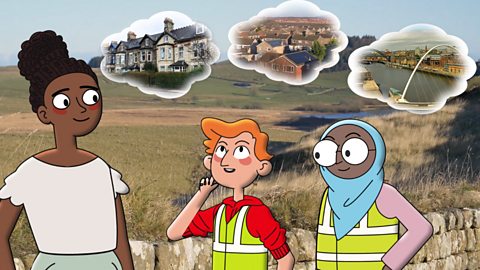
Fieldwork includes investigating both human and physical features.
Human features are things that have been built, such as:
- houses
- towns
- cities
- walls
- roads

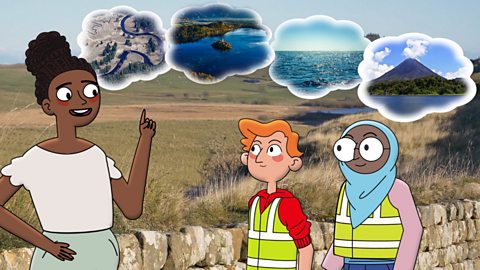
Physical features are anything that has formed naturally and that humans haven’t made, such as:
- rivers
- lakes
- oceans
- volcanoes
- mountains
Watch: What might a fieldwork focus be?
There are lots of places to carry out fieldwork. You could choose your local area, a city or rural locations like forests and national parks. Watch this video from ±«Óătv Teach to get some ideas.
De-Graft: Mixed forests like this are one of the most important habitats and ecosystems we have across the UK. And today, I’m getting a close up look on one of these…
This forest is on the edge of a place called Derwentwater. It's part of the Lake District, which is England’s largest national park.
Later locals Joseph and Ava are going to help me get a zoomed in look at this woodland. But first, let’s zoom out…
The Lake District is in the north of England. It’s one of 15 official national parks in the UK. The Cairngorms are the largest, most northerly national park in the UK, all the way up here in Scotland. There are three national parks in Wales - Snowdonia, Pembrokeshire Coast, and the Brecon Beacons. Northern Ireland doesn’t have any official national parks. But it does have many country parks, nature reserves and nine areas of outstanding natural beauty. Forests are one of the most biodiverse habitats in the UK and they’re important for us humans too.
Trees help capture carbon through leaves, wood and soil which helps fight against climate change. Leaves help us to breathe by taking in carbon dioxide and releasing oxygen into the atmosphere. Also, research shows spending time in forests and places that are rich in nature is good for our physical and mental wellbeing.
Joseph and Ava have joined me in the forest and I've set them the challenge of finding as many different kinds of fallen leaves and seeds as they can.
What is this?
Ava: It looks like a tiny pinecone.
De-Graft: So guys, there are loads of incredible things all around us but what are your favourite things that you’ve collected?
Joseph: I’ve got a big piece of bark.
Ava: And I have this…
De-Graft: Woah! I’ve got a big, mossy, stick looking thing.
Ava: Wow!
De-Graft: Now there are loads of different species of tree in the UK and they fall into two categories. We’ve got deciduous trees. Now, they are also called broadleaf. They lose their leaves in the winter and grow them back in the summer like an oak tree. Have we got any oak leaves in our baskets?
Joseph: Oh, I think I’ve got one!
De-Graft: Ayy, you’ve got a whole cluster of oak leaves there. And we’ve also got coniferous. Now, they produce seeds as cones. Does anyone have a pinecone in their basket?
Ava: Uh, yeah.
De-Graft: Yeah Ava, that’s the one.
In some locations, forests are carefully managed. Trees are harvested for wood, and then replanted. Other forests are completely protected and there's no tree cutting allowed at all. And in other places, trees are cut down to clear the land for things such as farming and building houses, this is called deforestation. It destroys ecosystems and contributes to climate change.
What are your thoughts on people cutting down trees?
Joseph: I think it’s alright to cut down trees as long as you replant them. Trees are kind of very important in the world because they produce oxygen, and we need oxygen.
De-Graft: OK, time to compare… The tallest tree in the Lake District is 57 metres tall. But the tallest tree in the world is in California and it’s just about double the height at 116 metres. That’s the same size as the length of five tennis courts!
What’s the closest national park or woodland where you live? What species of plants and animals do they have there? Zoom in and have a look for yourself.
Right guys, who can find the biggest leaf? Go!
Sources
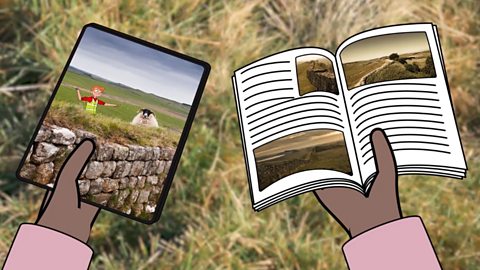
Information can be found in both primary and secondary sources.
Fieldwork involves collecting primary sources of information.

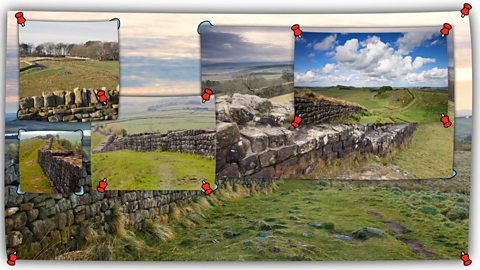
Primary sources of information are things that were collected at the time, and include:
- photographs
- diaries
- videos
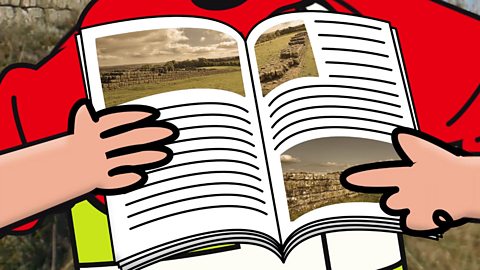
Secondary sources of information are usually based on primary sources, such as:
- magazines
- textbooks
- guidebooks
- newspapers

Explore features and sources
Examples of human and physical features, and primary and secondary sources of information:
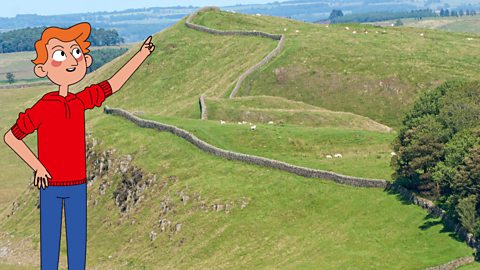
Image caption, Human and physical features
Hadrian’s Wall is a human feature, built on top of a hill - which is a physical feature.
Image caption, Edinburgh Castle
Edinburgh Castle was built on what is left of an extinct volcano. It was built as high as possible to help stop it being attacked.
Image caption, Primary source of information
When you take a photograph it is a primary source of information. All the data you collect is a primary source.
Image caption, Secondary sources of information
Video documentaries are secondary sources of information.
Image caption, Secondary sources of information
Information books and online searches are secondary sources of information.
1 of 5
Hadrian's Wall: Did you know?

Hadrian’s Wall is not the border between England and Scotland.
The wall is 74 miles long, but only 10% of it can now be seen.
It took 15,000 soldiers around six years to build Hadrian’s Wall.
Activities
Activity 1: Why am I doing this fieldwork?
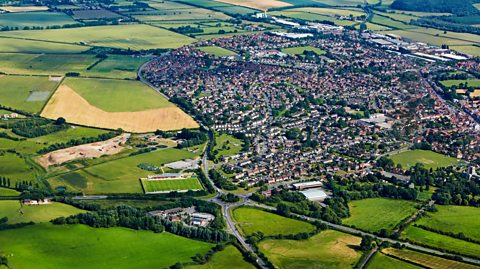
Look at a map and/or aerial image of where you are going.
- What features do you expect to see? Make a list.
- Add some questions for your enquiry. What do you want to find out? And why? Add this information as a brainstorm to your map or aerial image.

Activity 2: Quiz – Geographical fieldwork
Bitesize Primary games. gameBitesize Primary games
Play fun and educational primary games in science, maths, English, history, geography, art, computing and modern languages.

More on Fieldwork
Find out more by working through a topic
- count4 of 12
